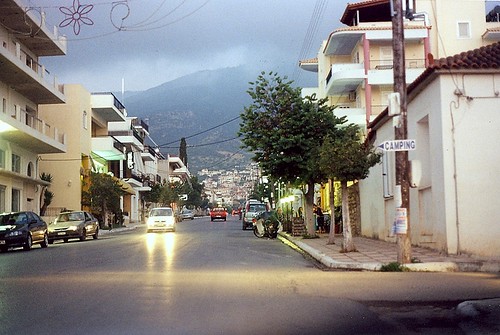As documented in the article ‘Woman of Sparta: Tough Mothers’, Spartan women enjoyed all kinds of rights not shared by their Athenian sisters – albeit plenty of plights too. Sparta’s unique social system and constitution, which was completely focused on military training and excellence, afforded females a level of freedom and responsibility uncommon in the classical world – as child bearers, they were vital to replenishing the ranks of an army that suffered an almost constant stream of casualties; with so many men constantly away at war, they were crucial to running their households and the community at large. Yet, Spartan…
-
-
In a conversation with Heritage Key (HK), Paul Denis (PD), the curator of Fakes & Forgeries Yesterday and Today, a newly announced exhibit at the Royal Ontario Museum, talks about how fake ancient artefacts are affecting the museum world. Among the things discussed are: -The emergence of ancient Greek coins as a new hot area for fraudsters. -Why the internet is an awful place to acquire artefacts. -How curators (with a little scientific help) pick out fakes. He also shares some interesting news: of the hundreds of Zapotec artefacts his museum has, about 50 percent are forgeries. He explains how they got duped on such a grand scale.…
-
‘Myrtis‘ has attracted thousands of people across Greece to see her, has appealed to the world leaders to end the spread of disease and now she earns herself a place amongst historic artefacts in the National Archaeological Museum in Athens. All this, and her name isn’t actually Myrtis. It was the name that was given to her by scientists who uncovered her remains, as well as over 150 other skeletons, from an archaeological dig of a ‘plague grave’ at Kerameikos Cemetery dating back between 426-430BC, as reported by ana-mpa. Myrtis’ resurrection some 2,500 years after her death from Typhoid –…
-
Sappho the Greek poet, Socrates the famous philosopher and the fascinating Aryan Culture which formed the basis of Eastern and Western civilisation have all been occupying my time in recent months but I had the chance to make a Heritage KeyVideo Journal entry (watch the video now) while I was recording in a London studio for a new BBC Documentary about the Aryan culture. Going out to Siberia, at the Russian-Kazakhstan border (click to open map), to see the homeland of the Aryans was very, very stimulating and intellectually very exciting, but particularly fascinating were that many of the artefacts…
-
An interesting concept powers a new website launched by the BBC called Dimensions, which uses data from historical sources to map the area of ancient sites such as the Long Walls of Athens, Stonehenge and the Great Library of Alexandria. The outline of these heritage sites can then be overlayed on top of any other area, so you can see the size of the ancient cities relative to where you live yourself! In a similar sort of scheme as the recent oil spill disaster in the Gulf of Mexico (which saw the British Museum targetted as part of a protest…
-
Attribution: 469 BC – 399 BC Relationship People Associated Plato, Xenophon Despite the fact that he left no literary legacy of his own, Socrates is still considered to be the founding father of Western Philosophy. Born in 469 B.C.E he took an early interest in science, studying under Archelaus. He gave up on the examination of the physical world, however, to concentrate on the exploration of morals and humanity. Socrates invented the conception of philosophical dialogue and spent much of his time in discussion with the aristocratic youth of Athens. He was greatly respected by the younger generation and during his time as a teacher to…
-
It was with odd reluctance that I took the hand of a pretty young girl in Room 17 of the British Museum on Saturday afternoon as she dragged me to the opposite side of the hall containing the stunning Nereid Monument, but through her broken English, she assured me I wasn’t about to meet my maker as she placed me in position in a crowd slowly forming a circle. I’ve visited the British Museum in Bloomsbury, London countless number of times, but I’d never seen what was about to happen next. It took me a moment to realise the girl…
-
is Britain’s best-loved and most prolific pop historian. She has appeared in no fewer than 11 television programmes in the past four months, with hotly-anticipated The Hemlock Cup, a major new book on legendary philosopher Socrates, out this October. With Hughes’ formidable CV in mind here’s a handy list of her publications on Heritage Key – they’re available to buy right here, so if one takes your fancy just click the title or the book’s cover. When the Moors Ruled in Europe This rangy DVD sees Hughes exploring one of Europe’s least-known eras: the Islamic occupation of Iberia, today’s Spain…
-
An ancient town that once may have launched ships to Troy has been discovered in a town in Greece. Archaeologists at the site in Kyparissia, on the western Pelopennese, have unearthed the outlines of buildings and ancient tiling ahead of roadworks, reports Hamara. The discovery will also be a boost for those who have long argued that the picturesque town, once known as Arkadia, supplied ships to Troy in antiquity. Yet the find is shrouded in controversy:some parts of the ancient town are higher than the depths of a neighbouring swimming pool complex – suggesting its owner knew of the…
-
Triesman slammed the Spanish, then we berated an Italian before surrendering to the Germans. But it’s a Macedonian England’s hierarchy should have studied before the country’s calamitous World Cup campaign. Alexander the Great didn’t get his name for nothing, but the way in which his empire imploded should have been a lesson to the FA long before its capitulation on Sunday. The Lesson Alexander the Great was born to be a leader. A son of Philip II of Macedon, Alexander enjoyed an unrivalled education under the tutelage of Aristotle. Aged just 19 he’d been handed the reigns of the empire,…









